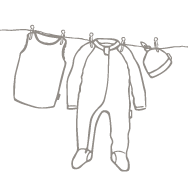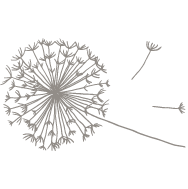What is a C-Section?
11 min read | 09 January 2023

A caesarean is an amazing way of bringing your baby into the world, either when a vaginal birth may not be the safest option, or a family chooses a C-section.
A caesarean is major abdominal surgery where an obstetrician makes an incision in the lower segment of your uterus, near your bikini line, before applying some pressure on your stomach and delivering your baby. Once your baby is out, and on your chest, the obstetrician will stitch up the incision.
A C-section might be elective (planned) or an emergency. Compared to vaginal birth, recovery from a C-section can take a little more time for your body to heal and recover, so go easy on yourself.
Why choose to have a C-section or caesarean?
Some reasons for an elective or planned C-section may include:
A previous C-section (and not wanting or able to try for a vaginal birth after a caesarean)
Baby is breech (bottom first) or lying sideways and cannot be turned
The placenta is close to or covering your cervix (placenta praevia)
Cephalopelvic disproportion or small pelvis
Multiple pregnancy (twins or triplets)
Maternal choice
When might I need to have an emergency C-section performed?
Some reasons for an emergency C-section include:
Baby is showing signs of distress
Your labour is not progressing or is halted. This may be because of the strength of your contractions, size of your baby or pelvis
The umbilical cord has fallen down through the cervix and into the vagina (emergency)
What are the types of anaesthetic for a C-section?
For a caesarean, there are two different types of anaesthesia that an anaesthetist can do:
Spinal Anaesthetic:
The most common is a spinal anaesthetic, where medication is put into your back so you cannot feel any pain or sensation from your breasts down to your toes. This means you are awake throughout the procedure, meet your baby and have cuddles with them straight away!
General Anaesthetic:
Less commonly, mothers are put under general anaesthesia if the baby needs to be delivered very quickly and there is no time for a spinal, if the spinal block does not work or if the mother chooses to be put to sleep.
What in the hospital happens after my C-section?
Once your baby has been born and all is well, skin to skin can be initiated in theatre and is fundamental in helping your newborn show cues for breastfeeding. Skin to skin also assists them in maintaining their temperature in theatre, regulating their breathing and heart rate, and beginning the beautiful mother-baby bond. While you are busy having cuddles with your baby, the obstetrician will finish the procedure by suturing each layer back together. After the operation, you will go to recovery, where your observations will be checked, and any pain managed. Once stable, you will be transferred to the postnatal ward to begin your postpartum recovery!
When you return to the ward, your legs might still feel heavy for 6-8 hours as the spinal anaesthetic wears off. Midwives will perform regular observations on you and your baby on the first night to ensure you are both well. There will be a catheter in your bladder until you can walk to the toilet and intravenous fluids running until you are eating and drinking normally.
You will spend the next 12 hours resting in bed until full feeling and sensation return, and you can walk safely. The first time you get out of bed, your midwife will give you pain relief and assist you in having a shower, as well as removing the catheter from your bladder. Your wound will be covered with a waterproof dressing, so it is safe to get wet.
As it is a major abdominal operation, you will experience some pain, and your midwife will give you regular medication to make sure you are as comfortable as possible. You can also request extra medicines if the pain gets worse. A physiotherapist will also (ideally) review you while in the hospital to ensure your recovery is smooth.
How long do you stay in the hospital after a C-section?
Typically, you will stay in hospital for 3-5 days after your C-section, depending on your hospital and situation.
Is it safe to breastfeed after a C-section?
It is safe to breastfeed after a C-section, and the midwives will be there to help your baby attach when they are ready and showing cues.
C-section Recovery Tips at the Hospital
Stay on top of the pain by taking regular medication and asking for stronger ones when you need
Rest! Whilst you are in hospital and have the extra help of the midwives, make sure you get some well-deserved rest in between feeds
Change your pads regularly and monitor your blood loss. It shouldn’t be heavier than a normal period
Gentle mobilisation every day will help with your recovery and reduces the risk of blood clots and infection
Bowel care is important when you are taking medication that can cause constipation. Ask your midwife for stool softeners as well as increasing fibre in your diet
Learn comfortable feeding positions that don’t apply pressure on your wound. Side lying and football hold can work well
Make sure you also do things that make you feel more like yourself, treat yourself to your favourite food, do a face mask or wash your hair!
Once you get discharged home, the total recovery time can range anywhere between 6 weeks to three months postpartum.
C-Section Recovery Tips for Home
Avoid going up and down stairs too often, keep everything you need like food and supplies close to you so you don’t overdo it.
Do not lift anything heavier than your baby, including a vacuum, washing basket and grocery bags. Ask for help from your partner, friends or family.
Eat nutritious meals and snacks, fibre-filled whole foods are great for recovery. Also stay well hydrated when recovering as it will help avoid constipation.
Support your belly and wound. This includes getting in and out of bed slowly and bracing your stomach when you cough or sneeze.
Avoid strenuous exercise until clearance by your doctor.
Continue to monitor bleeding, which should stop around 6 weeks postpartum.
Ask for help or take any help offered to you to ensure you look after your own physical and mental health.
Organise appropriate follow up with appointments with your OB, GP, midwife, lactation consultant, women’s health physiotherapist or maternal child health nurse.
Seek medical advice if you are experiencing redness, swelling or pus from the incision site, increased pain, a fever of more than 38°C, heavy vaginal bleeding, difficulty breathing, chest pain, or if you feel something is not right.
What follow-up appointments do I need after a C-section?
Follow-up appointments can vary depending on your model of care. Initial follow-up with your midwife or GP in the first week postpartum is recommended, and then you will see your OB or GP at 6-8 weeks postpartum. At this visit, your doctor may give you clearance to exercise and begin driving again. Seeing a women’s health physiotherapist is also a top tip following a C-section. Regaining abdominal strength and improving abdominal separation is one of the things they may suggest to work on postpartum.
Can I still have a vaginal birth in the future if I had a C-section?
Depending on when you fall pregnant again and why you had the first C-section, you may be ‘eligible’ for a vaginal birth after a caesarean section (VBAC). This is usually only recommended with a 2-year gap or longer. There are benefits and risks associated with a VBAC, but if vaginal birth is part of your birth preferences, speak to your healthcare professional about which plan may be right for you! Usually, after you have a C-section it is not recommended to fall pregnant for 12-18 months to allow the uterus to heal properly before the next baby.
C-sections are spectacular, beautiful and sometimes life-saving. Any way in which you birth your baby is powerful and unique. Planned or unplanned, I hope your C-section experience is as enjoyable as possible.
This blog is written by Aliza Carr, a registered midwife from Bumpnbub. All advice is general advice only and should not replace the need for medical advice from your healthcare provider.



